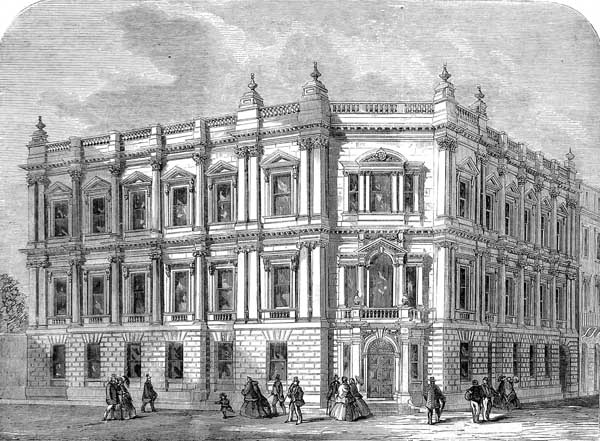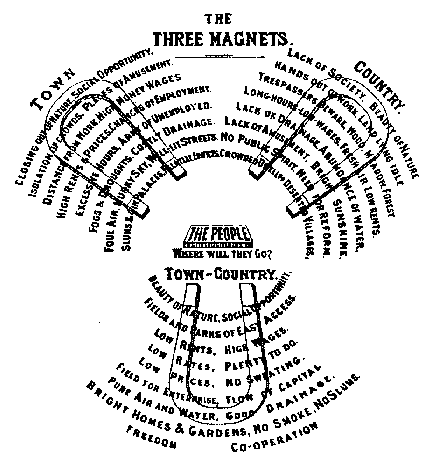|
Totterdown Fields
Totterdown Fields was the first London County Council cottage estate built between 1901 and 1911 It contained 1244 individual houses built over . The estate was designated a conservation area, on 19 September 1978. Context It was the first London County Council cottage estate built between 1901 and 1911 in Wandsworth. The estate contains 1,244 individual houses built over . It was influenced by Ebenezer Howard's Garden city movement and the Arts and Crafts The Arts and Crafts movement was an international trend in the Decorative arts, decorative and fine arts that developed earliest and most fully in the British Isles and subsequently spread across the British Empire and to the rest of Europe and ... movement. The principal architect was Ernest Stone Collins. Gallery File:16 Ruislip Street Tooting London SW17 8PD.jpg, A terrace of four houses in Ruislip Street File:Lessingham Avenue, Tooting.jpg, Two semi-detached houses in Lessingham Avenue File:Totterdown Estate green ... [...More Info...] [...Related Items...] OR: [Wikipedia] [Google] [Baidu] |
Conservation Area
Protected areas or conservation areas are locations which receive protection because of their recognized natural or cultural values. Protected areas are those areas in which human presence or the exploitation of natural resources (e.g. firewood, non-timber forest products, water, ...) is limited. The term "protected area" also includes marine protected areas and transboundary protected areas across multiple borders. As of 2016, there are over 161,000 protected areas representing about 17 percent of the world's land surface area (excluding Antarctica). For waters under national jurisdiction beyond inland waters, there are 14,688 Marine Protected Areas (MPAs), covering approximately 10.2% of coastal and marine areas and 4.12% of global ocean areas. In contrast, only 0.25% of the world's oceans beyond national jurisdiction are covered by MPAs. In recent years, the 30 by 30 initiative has targeted to protect 30% of ocean territory and 30% of land territory worldwide by 2030; t ... [...More Info...] [...Related Items...] OR: [Wikipedia] [Google] [Baidu] |
London County Council
The London County Council (LCC) was the principal local government body for the County of London throughout its existence from 1889 to 1965, and the first London-wide general municipal authority to be directly elected. It covered the area today known as Inner London and was replaced by the Greater London Council. The LCC was the largest, most significant and most ambitious English municipal authority of its day. History By the 19th century, the City of London Corporation covered only a small fraction of the metropolis. From 1855, the Metropolitan Board of Works (MBW) had certain powers across what is now Inner London, but it was appointed rather than elected. Many powers remained in the hands of traditional bodies such as parishes and the counties of Middlesex, Surrey, and Kent. The Local Government Act 1888 created a new County of London, with effect from 1889, and the English County council#England, county councils, of which LCC was one. This followed a succession of scandal ... [...More Info...] [...Related Items...] OR: [Wikipedia] [Google] [Baidu] |
Garden City Movement
The garden city movement was a 20th century urban planning movement promoting satellite communities surrounding the central city and separated with Green belt, greenbelts. These Garden Cities would contain proportionate areas of residences, industry, and agriculture. Ebenezer Howard first posited the idea in 1898 as a way to capture the primary benefits of the countryside and the city while avoiding the disadvantages presented by both. In the early 20th century, Letchworth and Welwyn Garden City were built near London according to Howard's concept and many other garden cities inspired by his model have since been built all over the world. History Conception Inspired by the utopian novel ''Looking Backward'' by Edward Bellamy, and Henry George's work ''Progress and Poverty'', Howard published the book '': a Peaceful Path to Real Reform'' in 1898 (reissued in 1902 as ''Garden Cities of To-morrow''). His idealised garden city would house 32,000 people on a site of . Howard's di ... [...More Info...] [...Related Items...] OR: [Wikipedia] [Google] [Baidu] |
Arts And Crafts
The Arts and Crafts movement was an international trend in the Decorative arts, decorative and fine arts that developed earliest and most fully in the British Isles and subsequently spread across the British Empire and to the rest of Europe and America. Initiated in reaction against the perceived impoverishment of the decorative arts and the conditions in which they were produced, the movement flourished in Europe and North America between about 1880 and 1920. Some consider that it is the root of the Modern Style (British Art Nouveau style), Modern Style, a British expression of what later came to be called the Art Nouveau movement. Others consider that it is the incarnation of Art Nouveau in England. Others consider Art and Crafts to be in opposition to Art Nouveau. Arts and Crafts indeed criticized Art Nouveau for its use of industrial materials such as iron. In Japan, it emerged in the 1920s as the Mingei movement. It stood for traditional craftsmanship, and often used Medi ... [...More Info...] [...Related Items...] OR: [Wikipedia] [Google] [Baidu] |
London County Council Cottage Estate
London County Council cottage estates are estates of council houses, built by London County Council, in the main between 1918 and 1939. Council-built housing The City of London Corporation built tenements in the Farringdon Road in 1865, but this was an isolated instance. The first council to build housing as an integrated policy was Liverpool Corporation, starting with St Martin's Cottages in Ashfield Street, Vauxhall, completed in 1869. That year a royal commission was held, as the state had taken an interest in housing and housing policy. This led to the Housing of the Working Classes Act 1890 ( 53 & 54 Vict. c. 70), which encouraged the London authority to improve the housing in their areas. It also gave them the power acquire land and to build tenements and houses (cottages). As a consequence London County Council opened the Boundary Estate in 1900, a block dwelling estate of tenements in Tower Hamlets. The first four cottage estates were at Norbury, Old Oak, Totterdown F ... [...More Info...] [...Related Items...] OR: [Wikipedia] [Google] [Baidu] |
Wandsworth
Wandsworth Town () is a district of south London, within the London Borough of Wandsworth southwest of Charing Cross. The area is identified in the London Plan as one of 35 major centres in Greater London. Toponymy Wandsworth takes its name from the River Wandle, which enters the River Thames, Thames at Wandsworth. Wandsworth appears in Domesday Book of 1086 as ''Wandesorde'' and ''Wendelesorde''. This means 'enclosure of (a man named) Waendel', whose name is also lent to the River Wandle. To distinguish it from the London Borough of Wandsworth, and historically from the Wandsworth District (Metropolis), Wandsworth District of the Metropolis and the Metropolitan Borough of Wandsworth, which all covered larger areas, it is also known as Wandsworth Town. History At the time of the Domesday Book (1086), the manor of Wandsworth was held partly by William, son of Ansculfy, and partly by St Wandrille's Abbey. Its Domesday assets were 12 hide (unit), hides, with ploughs and of me ... [...More Info...] [...Related Items...] OR: [Wikipedia] [Google] [Baidu] |
Ebenezer Howard
Sir Ebenezer Howard (29 January 1850 – 1 May 1928) was an English urban planner and founder of the garden city movement, known for his publication '' To-Morrow: A Peaceful Path to Real Reform'' (1898), the description of a utopian city in which people live harmoniously together with nature. The publication resulted in the founding of the garden city movement, and the building of the first garden city, Letchworth Garden City, commenced in 1903. The second true Garden City was Welwyn Garden City (1920) and the movement influenced the development of several model suburbs in other countries, such as Forest Hills Gardens designed by F. L. Olmsted Jr. in 1909, Radburn, New Jersey (1923), Pinelands, Cape Town, and the four Suburban Resettlement Program towns of the 1930s, Greenbelt, Maryland, Greenhills, Ohio, Greenbrook, New Jersey, and Greendale, Wisconsin. Howard aimed to reduce the alienation of humans and society from nature, and hence advocated garden citiesClark, B ... [...More Info...] [...Related Items...] OR: [Wikipedia] [Google] [Baidu] |
Ernest Stone Collins
Ernest is a given name derived from the Germanic word ''ernst'', meaning "serious", often shortened to Ernie. Notable people and fictional characters with the name include: People *Archduke Ernest of Austria (1553–1595), son of Maximilian II, Holy Roman Emperor *Ernest, Margrave of Austria (1027–1075) * Ernest, Duke of Bavaria (1373–1438) * Ernest, Duke of Opava (c. 1415–1464) * Ernest, Margrave of Baden-Durlach (1482–1553) *Ernest, Landgrave of Hesse-Rheinfels (1623–1693) *Ernest Augustus, Elector of Brunswick-Lüneburg (1629–1698) * Ernest, Count of Stolberg-Ilsenburg (1650–1710) *Ernest Augustus, King of Hanover (1771–1851), son of King George III of Great Britain *Ernest II, Duke of Saxe-Coburg and Gotha (1818–1893), sovereign duke of the Duchy of Saxe-Coburg and Gotha *Ernest Augustus, Crown Prince of Hanover (1845–1923) *Ernest, Landgrave of Hesse-Philippsthal (1846–1925) *Ernest Augustus, Prince of Hanover (1914–1987) *Prince Ernst August of ... [...More Info...] [...Related Items...] OR: [Wikipedia] [Google] [Baidu] |
Boundary Estate
The Boundary Estate is a housing development in the London Borough of Tower Hamlets, in the East End of London. The estate, constructed from 1890, was one of the earliest social housing schemes built by a local government authority. It was built on the site of the demolished ''Friars Mount'' rookery in the Old Nichol, with works begun by the Metropolitan Board of Works in 1893 and completed by the recently formed London County Council. Soil from the foundations was used to construct a mound in the middle of Arnold Circus at the centre of the development, surmounted by an extant bandstand. The estate consists of multistorey brick tenements radiating from the central circus, each of which bears the name of a town or village along the non-tidal reaches of the Thames. For administrative purposes, the estate lay just within the boundaries of the historic parish and (from 1900) Metropolitan Borough of Bethnal Green, which in 1965 became part of the new London Borough of Tower Ham ... [...More Info...] [...Related Items...] OR: [Wikipedia] [Google] [Baidu] |




